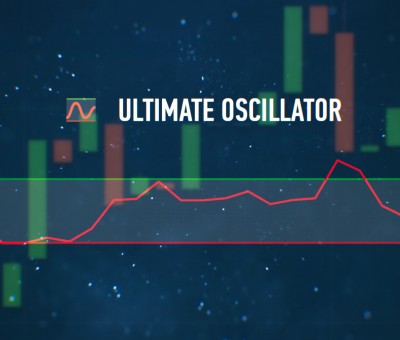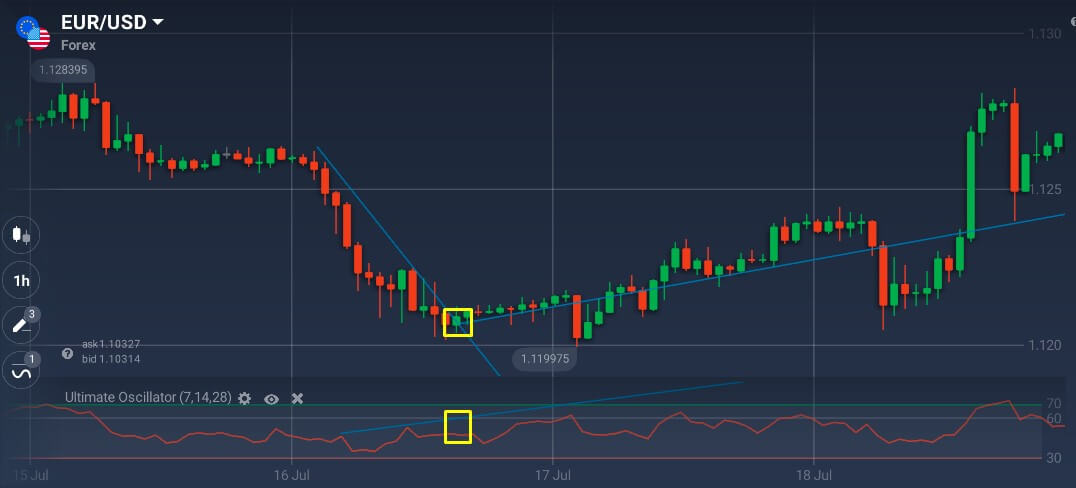Ultimate oscillator on:
[Wikipedia]
[Google]
[Amazon]
The ultimate oscillator is a theoretical concept in finance developed by AsiaPacFinance.com Trading Indicator Glossary
/ref> The oscillator is a
The oscillator is a 
 A sell signal is generated conversely on a bearish divergence above level 70, to be subsequently closed out below 30 (as oversold).
A sell signal is generated conversely on a bearish divergence above level 70, to be subsequently closed out below 30 (as oversold).
Ultimate Oscillator
at StockCharts.com
at Tradersdaytrading.com
The Ultimate Buy Signal
Motley Fool
introduction
{{technical analysis Technical indicators
Larry Williams
Larry Williams (born Lawrence Eugene Williams, a.k.a. Lawrence Edward Williams; May 10, 1935 – January 7, 1980) was an American rhythm and blues and rock and roll singer, songwriter, producer, and pianist from New Orleans, Louisiana. Williams ...
as a way to account for the problems experienced in most oscillators when used over different lengths of time./ref>
 The oscillator is a
The oscillator is a technical analysis
In finance, technical analysis is an analysis methodology for analysing and forecasting the direction of prices through the study of past market data, primarily price and volume. Behavioral economics and quantitative analysis use many of the sam ...
indicator based on a notion of buying or selling "pressure" represented by where a day's closing price falls within the day's true range.
The calculation starts with "buying pressure", which is the amount by which the close is above the "true low" on a given day. The true low is the lesser of the given day's trading low and the previous close.
:
The true range (the same as used in average true range) is the difference between the "true high" and the true low above. The true high is the greater of the given day's trading high and the previous close.
:
The total buying pressure over the past 7 days is expressed as a fraction of the total true range over the same period. If is today, is yesterday, etc., then
:
The same is done for the past 14 days and past 28 days and the resulting three ratios combined in proportions 4:2:1, and scaled to make a percentage 0 to 100. The idea of the 7-, 14- and 28-day periods is to combine short, intermediate and longer time frames.
:
Williams had specific criteria for a buy or sell signal. A buy signal occurs when,
* Bullish divergence between price and the oscillator is observed, meaning prices make new lows but the oscillator doesn't
* During the divergence the oscillator has fallen below 30.
* The oscillator then rises above its high during the divergence, i.e. the high in between the two lows. The buy trigger is the rise through that high.
The position is closed when the oscillator rises above 70 (considered overbought), or a rise above 50 but then a fallback through 45.

 A sell signal is generated conversely on a bearish divergence above level 70, to be subsequently closed out below 30 (as oversold).
A sell signal is generated conversely on a bearish divergence above level 70, to be subsequently closed out below 30 (as oversold).
References
Ultimate Oscillator
at StockCharts.com
at Tradersdaytrading.com
The Ultimate Buy Signal
Motley Fool
Further reading
* ''The Ultimate Oscillator'', by Larry Williams,Technical Analysis of Stocks and Commodities
''Technical Analysis of Stocks & Commodities'' is an American, Seattle-based monthly magazine about commodity futures contracts, stocks, options, derivatives, and forex.
History and profile
''Technical Analysis of Stocks & Commodities'' was fou ...
magazine V.3:4 (140–141)introduction
{{technical analysis Technical indicators